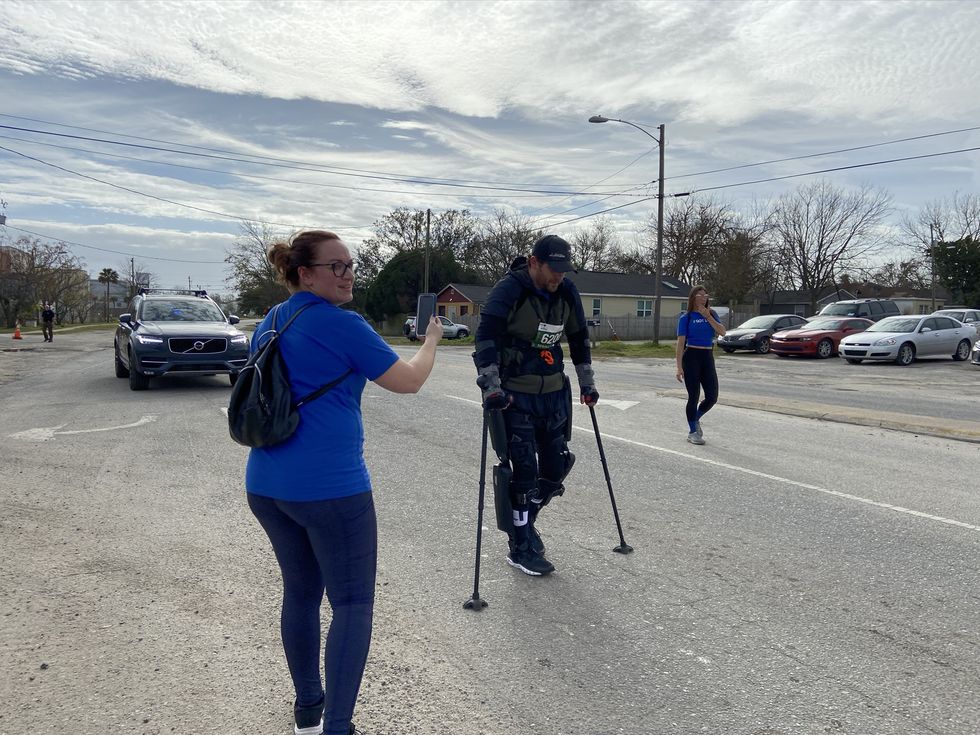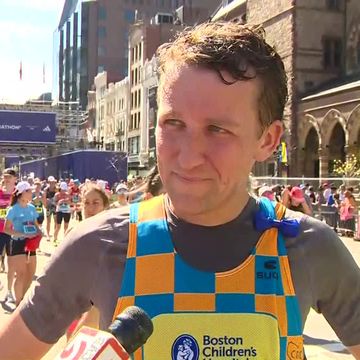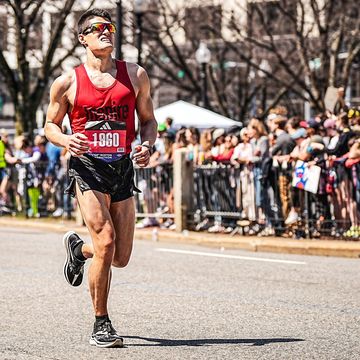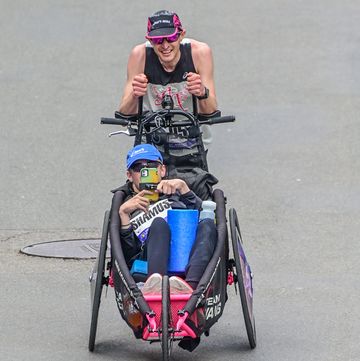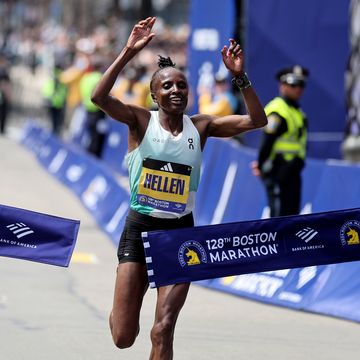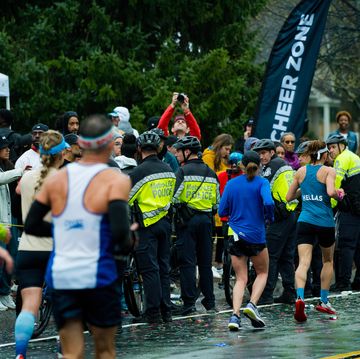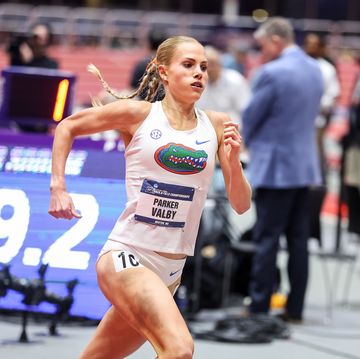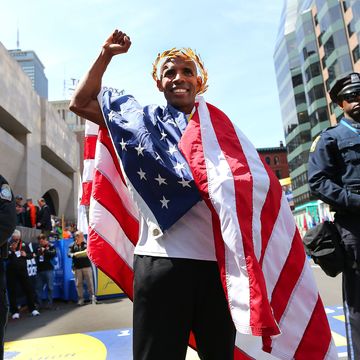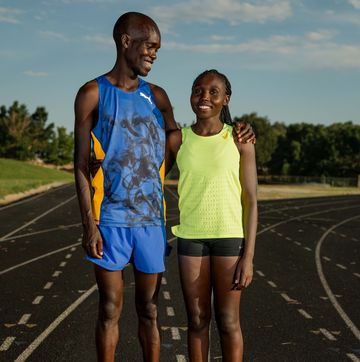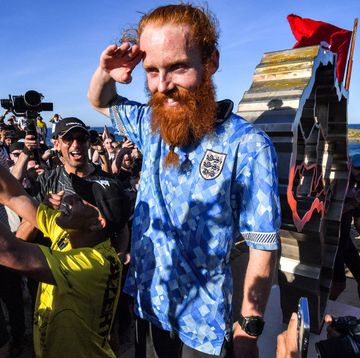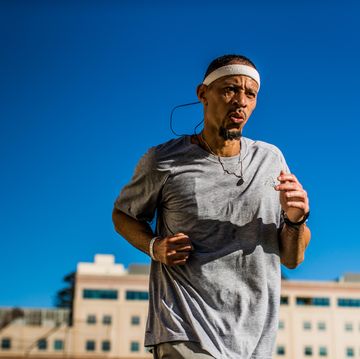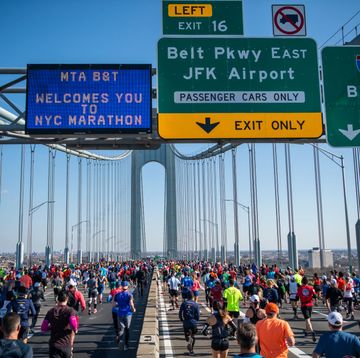- Adam Gorlitsky set the record for the fastest marathon in an exoskeleton at the Charleston Marathon.
- The South Carolina native beat the previous mark by Simon Kindleysides by more than three hours.
- The 33-year-old completed the race in 33 hours, 16 minutes, and 28 seconds.
Adam Gorlitsky hit the wall hard during his second marathon attempt around the mile 20-mark this past Saturday at the Charleston Marathon in South Carolina. The only other time he had ever run this far was during his first marathon attempt last March at the Los Angeles Marathon.
While battling against pain in his wrists and legs and pushing the limits on the motors on his ReWalk Robotic Exoskeleton, Gorlitsky fought on, not only hoping to capture his first marathon finish, but also better the world record for fastest marathon in a robotic walking machine.
He did just that after starting on Thursday night at 10:34 p.m. and finishing around 7:50 a.m. on Saturday, giving him the record with an official time of 33 hours, 16 minutes, 28 seconds.
This has been the 33-year-old’s goal for four years, ever since he purchased the $80,000 device. It was 14 years ago that doctors told him he would never walk again after falling asleep at the wheel and crashing his vehicle, leaving him paralyzed below the waist.
Determined to regain his independence, Gorlitsky slowly worked toward that goal in his wheelchair until he realized he wanted to do more. That’s when he found the exoskeleton and made it his goal to walk 1 million steps in races for his nonprofit I Got Legs, which enables athletes with physical challenges by providing opportunities, programs, and grants that unlock an improved quality of life.
Gorlitsky has completed roughly 50 races so far in the suit, mostly at the 5K and 10K distances. But the marathon has been on his mind since he started. That’s why he signed up for the L.A. Marathon last year.
“The marathon has always loomed over my head,” Gorlitsky told Runner’s World. “In L.A., I started sleep deprived at midnight and it was just hills. That one beat me down.”
After reassessing his goals, Gorlitsky decided to sign up for his hometown race in Charleston, South Carolina. There, he was familiar with the less hilly course, and he could attempt to break the world record for the fastest marathon in a robotic walking suit, which was set in April at the London Marathon by his friendly rival, Simon Kindleysides in 36 hours, 46 minutes.
[Run faster, stronger, and longer with this 360-degree training program.]
Four months before the race, Gorlitsky reached out to the race director for approval to start early and the city to ensure he could use the course prior to the official start time. With both’s approval, he geared up for his Thursday night start.
Gorlitsky had the roads almost entirely to himself until sunrise on Friday. His crew followed slowly behind, walking and driving. Going at about a 55- to 60-minute-mile pace and stopping around every two hours to change the battery in his device, he was well ahead of the record pace by the 13.1 mile mark.
“I didn’t sleep at all, and the longest break I think we took was an hour at the halfway point,” he said. “Otherwise, it was really just breaks for the bathroom and to change batteries.”
After that, he kept going throughout the day. People in their cars and spectators going through their days cheered him and offered words of encouragement. Then, the second night began. Approaching that 20-mile mark, he started to feel the wear and tear on his body.
“My hands and wrists began to throb in my wrist guards,” he said. “They were on fire.”
With two miles to go, he started to experience what he called micro blackouts from exhaustion and sleep deprivation. He yelled at times to motivate himself as family and friends around him cried.
By the time he saw the finish line, he was so beat up that he only wanted one thing.
“I kept telling myself that I could not wait to get back in my wheelchair because I wanted to get out of the exoskeleton,” Gorlitsky said. “By the end, though, I was the first one to start the race, and the first one to finish though I was technically the last with my time.”
Gorlitsky bested Kindleysides’s previous mark by more than three and a half hours.
Though Gorlitsky wanted to celebrate, he instead had three people help him to his wheelchair and spent two and a half hours in a the medical tent receiving an IV drip for dehydration.
“My feet swelled up like balloons when I took my compression socks off,” he said.
He planned to rest and miss out on one of the charity events I Got Legs hosts each year: the Betty Carlton Beer Mile, named after Betty—the name of his grandmother and what he calls his exoskeleton—a favorite character of his from The Fresh Prince of Bel Air.
Initially, Gorlitsky had no plans of stepping back into the exoskeleton 24 hours after the marathon, but he couldn’t miss his favorite event.
“Everyone was there, we were doing it in a baseball stadium for the first time, so I got back into the exoskeleton and did all four laps,” he said. “It wasn’t too bad. I think the alcohol had a lot to do with that.”
A few days out, Gorlitsky is still recovering. His wrists and hands were numb until about Tuesday and his feet still swell up like balloons here and there, but he’s feeling good.
He is not currently signed up for another race; however, he does have some ideas like racing Kindleysides at a marathon and continuing to inspire through his efforts with I Got Legs.
“Your adversity does not define who you are,” Gorlitsky said. “For the last four years of walking races, I know that my injury doesn’t define me, but it takes my version of legs to do this. Legs can come in many forms, so anyone out there who doesn’t think they can do it, I’d just say try to find out what your legs are, and see if you can get out there, too.”
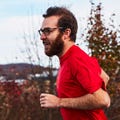
Drew covers a variety of subjects for Runner’s World and Bicycling, and he specializes in writing and editing human interest pieces while also covering health, wellness, gear, and fitness for the brand. His work has previously been published in Men’s Health.

